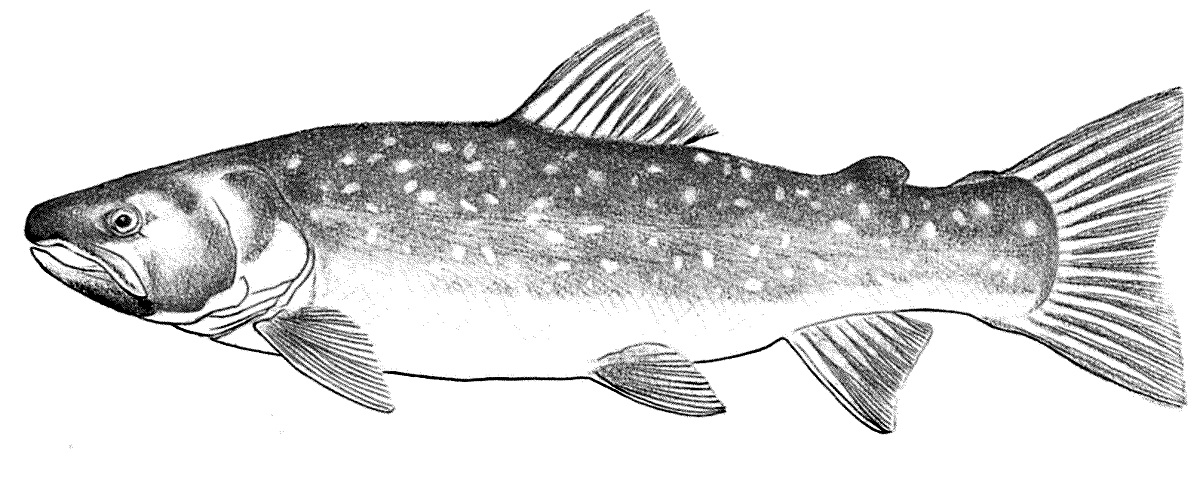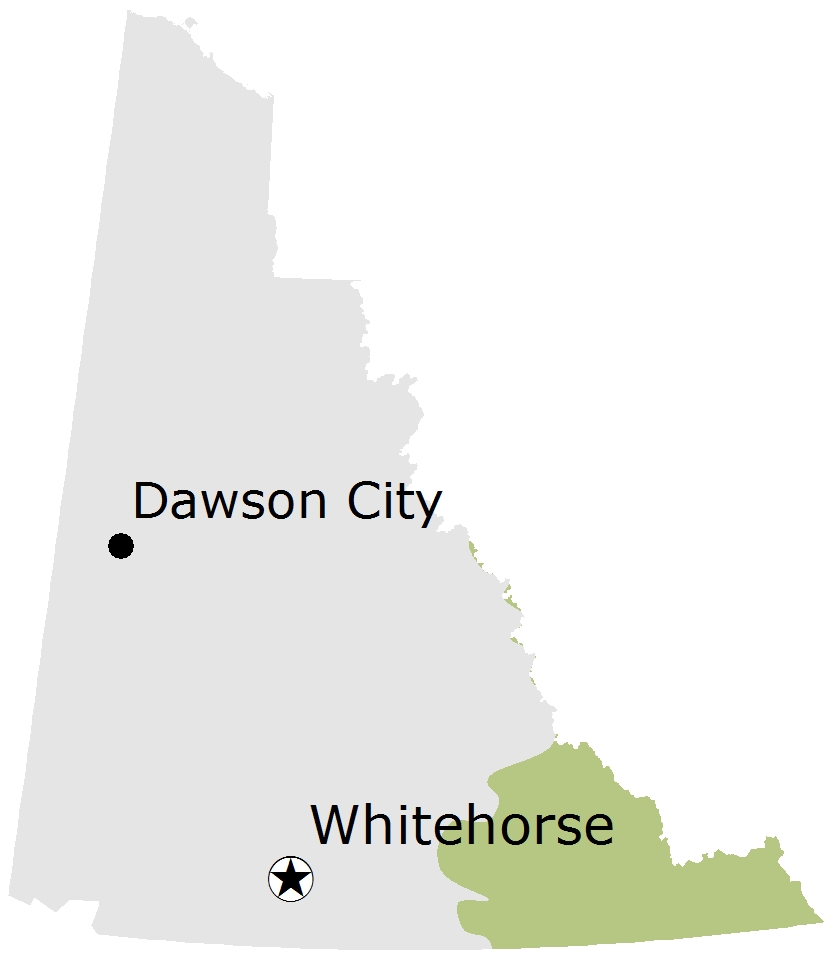
Name
- Common name: Bull Trout
- Scientific name: Salvelinus confluentus
- Order: Salmoniformes
- Sub-family: Salmoninae
Viewing opportunities
- Bull Trout are only found in the Liard River drainage in the southeastern Yukon. A good spot to see them is below the Rancheria Falls along the Alaska Highway.
- In rivers, look for it above or below rapids, in holes, or at the mouths of tributary streams.
- In lakes, look near inlets, outlets and narrow spots.
Description
- Large, flat head, large mouth and slender body.
- Small scales; white leading edges of the paired fins.
- Pale pink, lilac or red spots along sides are large and well-spaced.
- Spawning fish are less brightly coloured than Dolly Varden and Arctic Char; males develop a smaller kype, which is a hooked jaw.
Fast facts
- Length: 30 to 60 cm
- Weight: 0.8 to 4 kg
- Habitat: Cold streams and lakes
Conservation status
- Yukon: S3 (Vulnerable)
- Global: G5 (Secure)
Yukon population estimate
Not determined.
Behaviour
Bull Trout have a voracious appetite making them susceptible to over-harvest. Furthermore, they habitually congregate during spawning time, bringing a population to concentrated locations. Bull Trout is an exclusively freshwater fish that spawns in the autumn on gravel bottoms of stream and river outlets and inlets.
Diet
Aquatic insects and small fish.
Distribution

Bull Trout and people
- Bull Trout were known as Dolly Varden until the 1980s when they were reclassified as their own species.
- Bull Trout and Dolly Varden are extremely difficult to tell apart, making geography the easiest way to distinguish the two. If found in the Liard drainage the fish is likely a Bull Trout, while those found elsewhere in the Yukon are likely Dolly Varden.